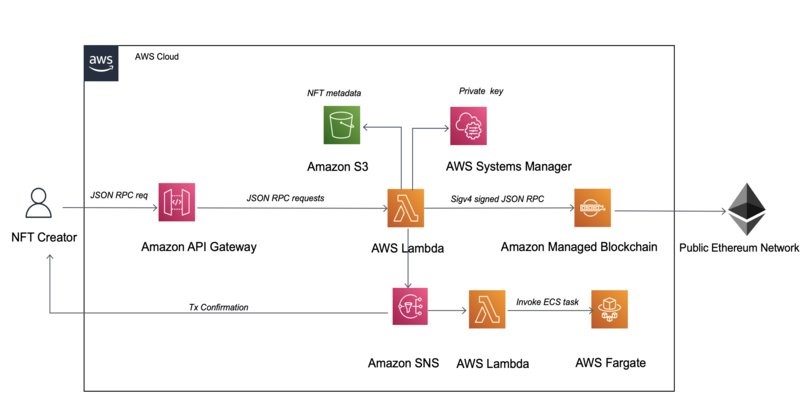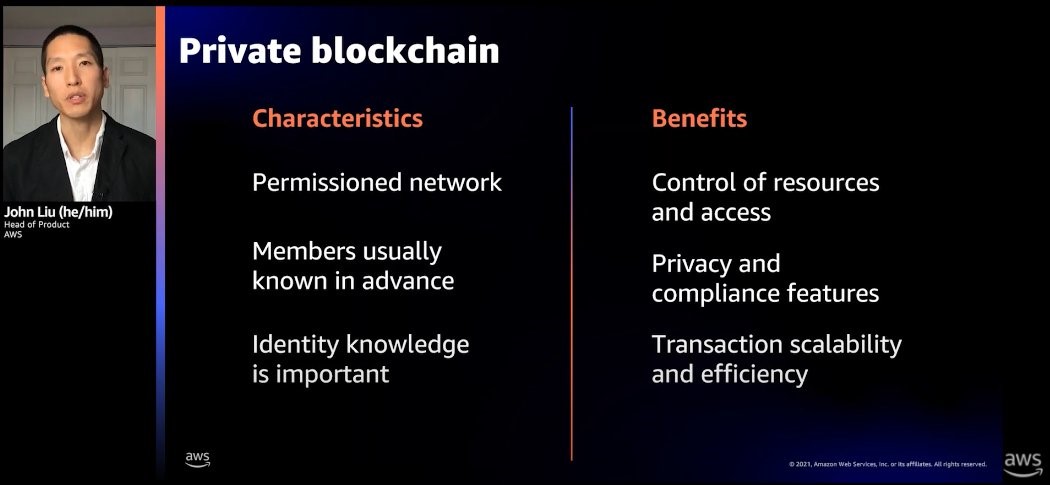Post Syndicated from Luca Mezzalira original https://aws.amazon.com/blogs/architecture/lets-architect-architecting-for-blockchain/
You’ve likely read about or heard someone talk about blockchain. This distributed and decentralized ledger collects immutable blocks of information and helps secure your data without going through third party. It is commonly used to maintain secure and decentralized records for registries, consensus, cryptocurrencies, and the latest trend: non-fungible tokens (NFTs).
This collection of content will help you learn the basics of blockchain and drill down in to the mindset to apply while architecting for blockchain. We focus on the architectural aspects to explain what the blockchain is from a technological perspective, how it works, when we need it, as well as its characteristics applied to different scenarios.
Amazon Managed Blockchain: When to use blockchain
There is a lot of buzz about blockchain, but when should you use it? What are its benefits and limitations? This video introduces you to Amazon Managed Blockchain and will help you identify if blockchain is a good solution for you and what type of blockchain is best suited for your use case.
Deep Dive on Amazon Managed Blockchain
In this video, Johnathan Fritz, a Principal Product Manager for Managed Blockchain shares some challenges his team faced while building a distributed and immutable network and how they overcame them. The talk provides a good example of mental models you can use to understand and solve challenges while architecting.
Mint and deploy NFTs to the Ethereum blockchain using Amazon Managed Blockchain
Buying NFTs is a hot topic right now. But how do you create your own? This blog post provides you a step-by-step guide that shows you how to create an NFT and how to establish a workflow to deploy ERC-721 contracts to the public blockchain Ethereum Rinkeby testnet.

The architecture uses Managed Blockchain to take advantage of maintained Ethereum nodes and allow developers to focus on smart contracts
How Specright uses Amazon QLDB to create a traceable supply chain network
Blockchain and distributed ledger technologies focus on decentralizing applications involving multiple parties where no single entity owns the application. When your application is decentralized and involves multiple, unknown parties, blockchains can be appropriate. On the other hand, if your application only requires a complete and verifiable history of data changes, you can consider a ledger database.
This post shows how Specright uses use Amazon Quantum Ledger Database (Amazon QLDB) to generate a complete, verifiable history of data changes, to generate an append-only immutable journal of events. Their architecture makes sure that all members of the network have access to the same and latest version of the specification to instantly track change history to investigate quality issues.

This architecture allows all members of the supply chain network to access the same and latest versions of specifications
See you next time!
Thanks for reading! If you’re looking for more ways tools to architect your workload, check out the AWS Architecture Center.
See you in a couple of weeks when we discuss strategies for running microservices with containers!

